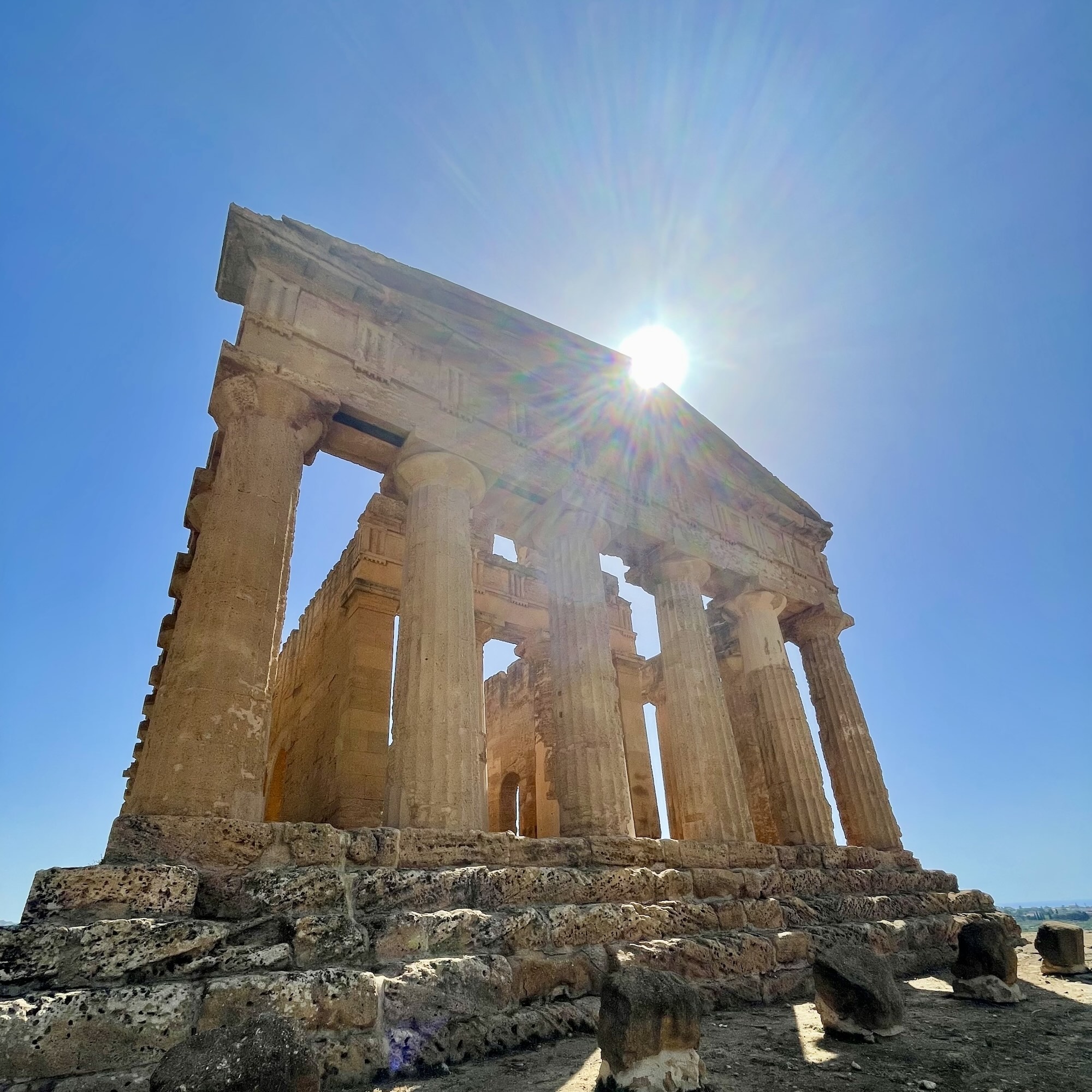
Sicily's UNESCO World Heritage Sites
by
Matt Bird
Sicily is famous as a Mediterranean island for many reasons, including having the most Michelin-starred restaurants, the largest active volcano, the longest beach line, and the most UNESCO World Heritage Sites.
Globally, there are 1,223 UNESCO World Heritage Sites (July 2024). Of those, 60 are in Italy, the highest number of any country, and seven are in Sicily.
Noto itself is one of those UNESCO World Heritage Sites, and four others are within a two-hour drive. So, it’s a good choice to be based in Noto and begin your explorations from here.
UNESCO #1: Val di Noto, the late Baroque towns of the Val di Noto (listed in 2002)

In 1693, an earthquake devastated southeast Sicily, which led to the rebuilding of towns in late baroque architecture. The town of Noto has lent its name to the cluster of eight towns known as the Val di Noto - Caltagirone, Catania, Militello Val di Catania, Modica, Noto, Palazzolo Acreide, Ragusa and Scicli. In the words of UNESCO, “the Late Baroque Towns of the Val di Noto in southeastern Sicily provide outstanding testimony to the exuberant genius of late Baroque art and architecture... and represent the culmination and final flowering of Baroque art in Europe.”
UNESCO #2: Ancient Syracuse and the Rocky Necropolis of Pantalica (listed in 2005)

Syracuse became one of the most influential cities in the ancient Greek empire, including the Island of Ortigia, which is a labyrinth of streets and ancient ruins, including columns of the Hellenic Temple of Diana. According to UNESCO, “the group of monuments and archaeological sites situated in Syracuse... is the finest example of outstanding architectural creation encompassing several cultural influences (Greek, Roman and Baroque). The Rocky Necropolis is located 25km northwest of Syracuse and contains more than five thousand tombs dating back from the 13th to 7th centuries BC.
UNESCO #3: Mount Etna (listed in 2013)

Mount Etna is Europe’s most active volcano; it is also the continent's highest at 3,350 metres and largest, with a vast surface area of 1,190 square km. It is home to various landscapes, from craters, forests, citrus groves and vineyards. UNESCO describes that Mount Etna’s “almost continuous eruptive activity (which) continues to influence volcanology, geophysics, and other Earth science disciplines...”
UNESCO #4: Agrigento and the Valley of the Temples (listed in 1997)

Agrigento was founded by colonists in the 6th century BC and soon became a thriving Greek city. On the city's outskirts is the Valley of the Temples, which is actually not in a valley but on a hill and home to the finest Ancient Greek architecture outside of Greece. According to UNESCO, the Valley of the Temples “is one of the most outstanding Greek art and cu.”
UNESCO #5: Villa Romana del Casale (listed in 1997)

The 4th-century AD Villa Romana del Casale is located outside the historic town of Piazza Armerina. It wasn’t until the 20th century that archaeologists fully unearthed around 3,500 square metres of beautifully preserved Roman mosaics. UNESCO considers this “the supreme example of a luxury Roman villa, which graphically illustrates its age's predominant social and economic structure. The mosaics that decorate it are exceptional for their artistic quality, invention, and extent.”
UNESCO #6: The Aeolian Islands (listed in 2000)
The Aeolian Islands are located 30 kilometres off the north coast of Sicily and are composed of Panarea, Stromboli, Vulcano, Alicudi, Filicudi, Lipari and Salina. The islands are known for Vulcanian eruptions, characterised by occasional short and violent explosions and Strombolian eruptions, characterised by frequent (but less explosive) lava and gas ejections. For UNESCO, the islands “have provided the science of volcanology with examples of two types of eruption (Vulcanian and Strombolian) and thus have featured prominently in the education of geologists for more than 200 years. The site continues to enrich the field of volcanology.”
UNESCO #7: Arab-Norman Palermo & the Cathedral Churches of Cefalú & Monreale (listed in 2015)

Palermo, Sicily’s capital, is known for its intense multi-sensory and multi-cultural experience. There are nine heritage sites of note: The Norman Palace, The Palatine Chapel, The Zisa Palace, The Church of San Giovanni degli Eremiti, The Church of Santa Maria dell’Ammiraglio, The Church of San Cataldo, The Admiral’s Bridge and The Cathedrals in Palermo, Monreale, and Cefalù. As UNESCO says, “Collectively, (these constructions) are an example of a social- cultura syncretism between Western, Islamic and Byzantine cultures on the island which gave rise to new concepts of space, structure and decoration. They also bear testimony to the fruitful coexistence of people of different origins and religions (Muslim, Byzantine, Latin, Jewish, Lombard and French).”
Keep Reading



